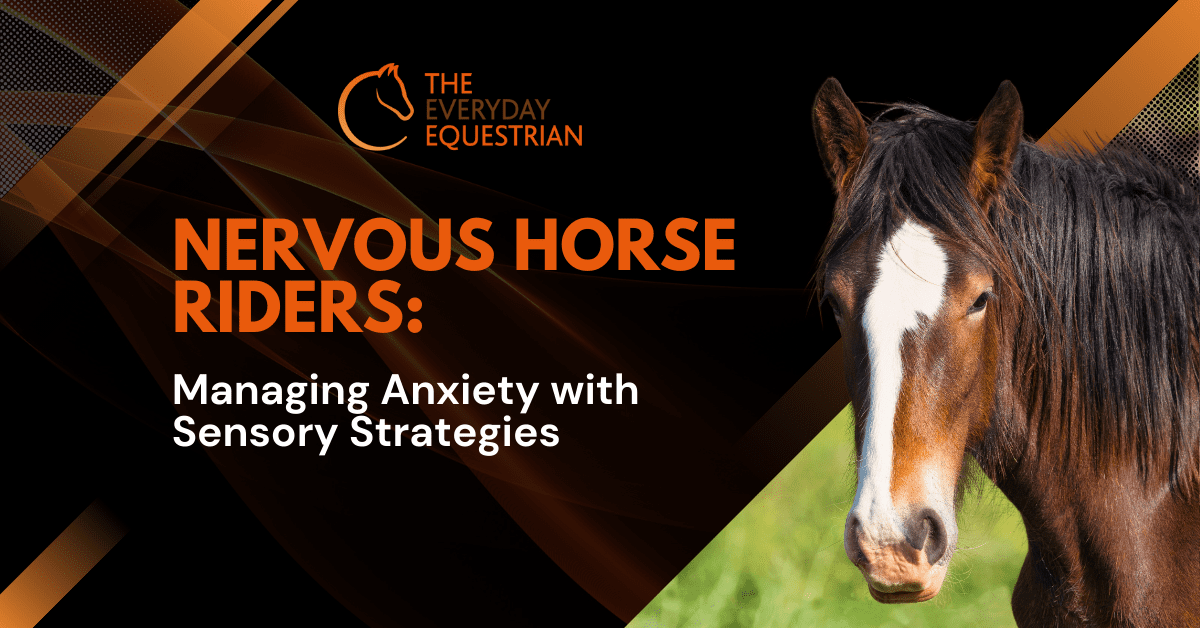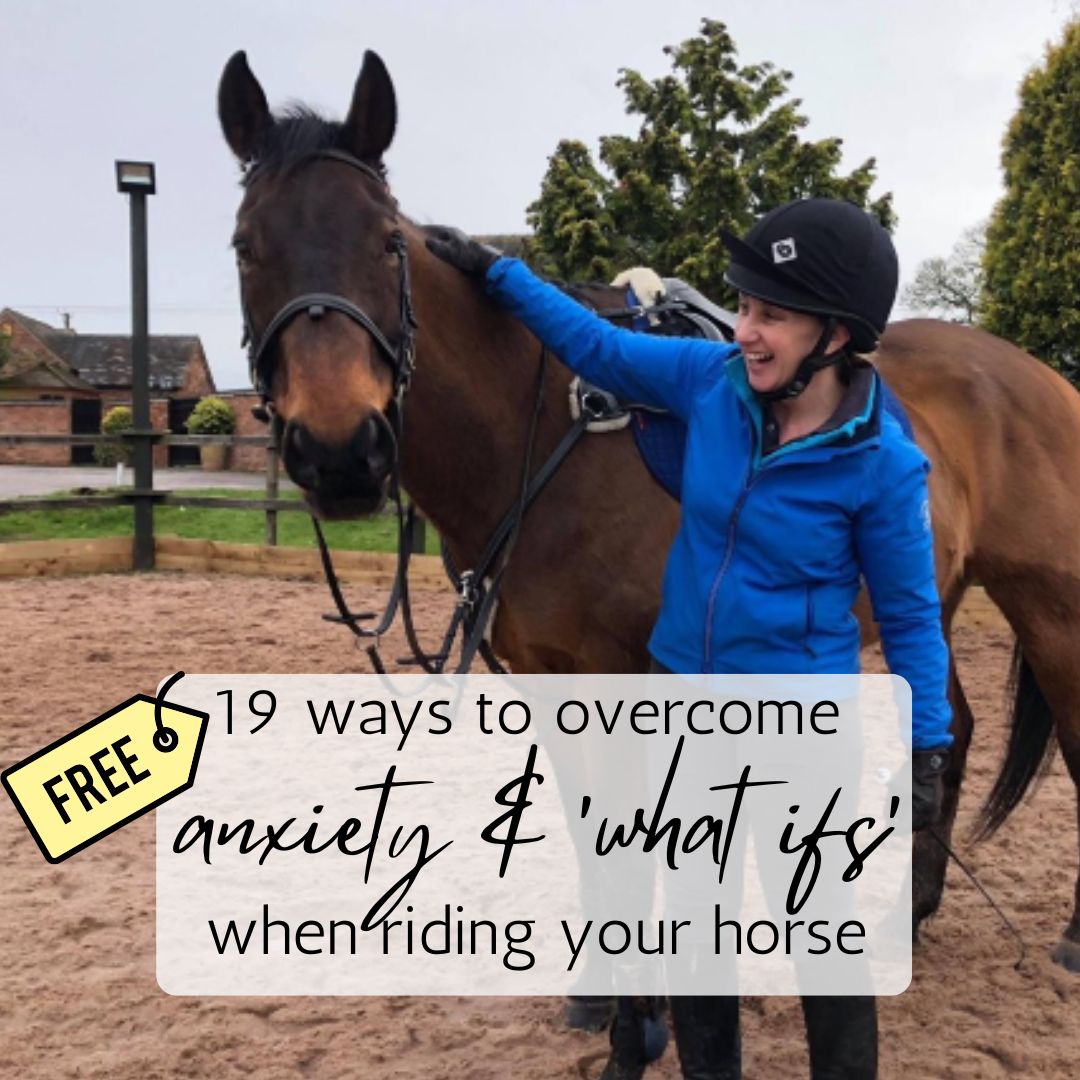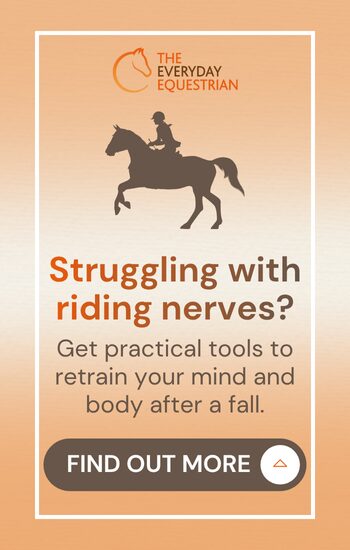Understanding how we process sensory information can significantly influence how we experience nerves, anxiety, and fear when riding our horse. We use our ‘internal representational systems’, which refer to the primary ways we perceive and internalise our experiences through our senses, to make provide information about our experiences. Our mind filters and uses this information to make meaning of our subjective experience, as a point of reference for the future.
Our internal representational systems are visual (seeing), auditory (hearing), kinesthetic (feeling), gustatory (tasting), and olfactory (smelling). The processed information from each of these senses will impact how your unconscious mind processes your world and have an impact on how you feel about yourself, your horse and riding.
Visual (Sight)
If you tend to think in pictures, you might visualise potential problems while riding, like imagining a fall or picturing the horse becoming spooked. These vivid mental images can make you feel more anxious. To manage this, you can refocus your mind on visualising exactly what you actually want to happen, in as much detail as you can. Your mind really doesn’t know the difference between what’s real and what’s imagined, and will respond to precisely what you tell it! So using this to your advantage and use your brilliant imagination to create a visualised scenario where things happen exactly as you want them to, and where you manage any surprises with ease and confidence.
Auditory (Hearing)
If you’re sensitive to sounds, the external noise of the horse’s hooves, your horse’s breathing, or sounds from the environment will all add to how you experience riding your horse. Internal sounds, such as your self-talk are also an important factor, since we often don’t realise quite how we speak to ourselves in our mind! Listening to calming music (where it’s safe to do so, obviously!), and positively managing your self-talk before and during your ride will help boost your confidence.
Kinaesthetic (Feel)
If you are someone who is highly attuned to your feelings and emotions, you might be acutely aware of every physical sensation in your body and how it makes you feel. You might be aware of a knot in your stomach, tightness in your throat, or a very real feeling of having your legs turn to jelly! These type of physical sensations quickly transmit an alert to your mind, triggering nerves, anxiety and even fear. Practising deep breathing or other relaxation techniques can help you manage these physical sensations and reduce your anxiety.
Gustatory (Taste)
As riders, the sense of taste is one we don’t often think about, and it’s closely tied to memory, where certain flavours can trigger emotional responses. I know of riders who chew minty gum before they ride (never chew gum while riding, as it is a choking hazard), and that minty sensation on their tongue can anchor feelings of readiness and confidence. Being mindful of what you eat or drink before riding and choosing flavours that you find comforting or refreshing can help trigger a shift in how you feel.
Olfactory (Smell)
Certain smells can evoke powerful emotional responses. I don’t know about you, but I love the slightly warm, sweaty smell of horses who have just worked (that sounds weird, doesn’t it?!). As a child, I dreamed of the smell horses, of leather tack, and even now the first fly spray of the summer brings a reminiscence of happy hacking days. Find those smells which make you feel good and remind you of happy times, then make use of these whenever you can.
Recognising which of these sensory inputs resonates with you most will provide you with simple tools to improve your riding confidence. By consciously adjusting how you seek out and use these sensory inputs, you can help yourself feel more in control and less anxious while riding.
Preferences
While each of us might have a preference for one or more internal representational systems, such as visual, auditory, or kinesthetic, it’s important to note that we don’t exclusively use just one; our mind gathers and uses information from all of them. Think of it like having a favourite tool in a toolbox; even though you might prefer one tool, you still use the others when the situation requires it.
For instance, even if you primarily process your experience in a primarily visual way by imagining scenarios and pictures in your mind, your mind will still also pay attention to what you hear, the physical sensations you feel, the tastes and smells that surround you. Each sense provides a different piece of the puzzle, contributing to a fuller understanding and experience of your environment.
This means when you’re riding your horse and trying to manage anxiety, even though you might focus on using your preferred sensory channel, such as visualising calm and successful rides, you’ll also benefit from tuning into the sounds that calm you, the feel of the horse beneath you, and even calming scents or flavours. Using a combination of all your senses can help create a richer, more grounded experience that can be more effective in managing your nerves.



